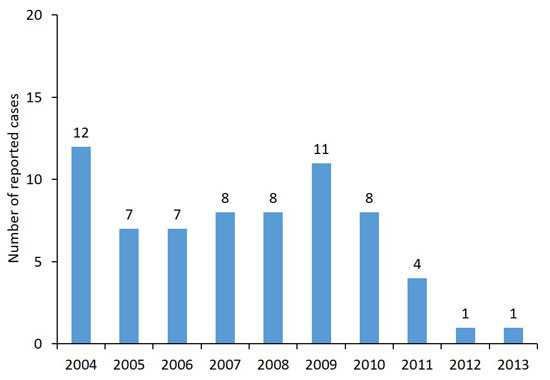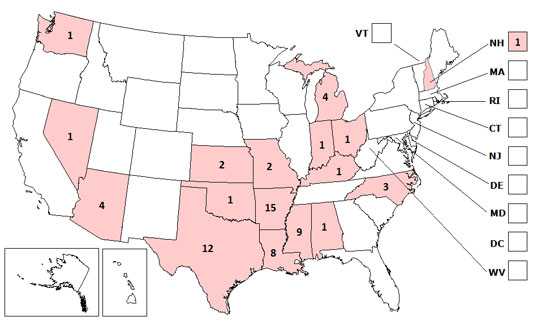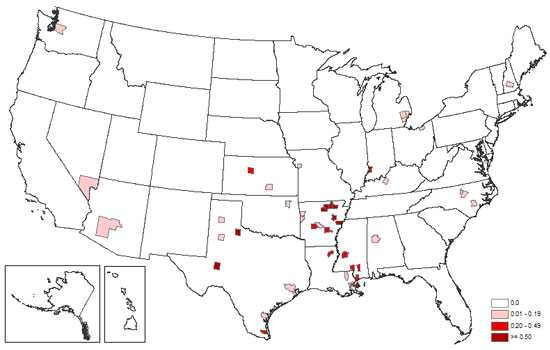Epidemiology & Geographic Distribution
St. Louis encephalitis virus (SLEV) is transmitted to humans through the bite of an infected mosquito. All residents of and visitors to areas where SLEV activity has been identified are at risk of SLEV infection, particularly persons who engage in outdoor work and recreational activities, and those living in low-income areas. Most SLEV infections are silent; clinical infections range in severity from mild nonspecific febrile illnesses to meningitis or encephalitis. The risk of severe disease and fatality increases with age. SLEV infection is thought to confer life-long immunity against re-infection.
In the United States, the annual number of reported SLEV neuroinvasive disease cases reported fluctuates widely, as result of periodic epidemics. To ensure standardization of reporting across the country, CDC recommends that the national surveillance case definition be consistently applied by all state health departments.
In temperate areas of the United States, SLEV disease cases occur primarily in the late summer or early fall. In the southern states, where the climate is milder, cases can occur year round. Although the geographic range of the virus extends from Canada to Argentina, human cases have almost exclusively occurred in the United States. The majority of cases have occurred in eastern and central states, where episodic urban-centered outbreaks have recurred since the 1930s. In the rural west, transmission has followed a more endemic pattern. The largest epidemic of SLEV neuroinvasive disease ever recognized occurred in the United States in 1975, with nearly 2,000 cases reported, primarily from the central states in the Ohio-Mississippi River Basin.
St. Louis encephalitis virus neuroinvasive disease cases reported by year, 2004–2013

Source: ArboNET, Arboviral Diseases Branch, Centers for Disease Control and Prevention.
Downloadable version of above graph
Data Table: In the United States, the number of St. Louis encephalitis virus neuroinvasive disease cases reported each year varies. From 2004 through 2013, an average of 7 cases were reported annually (range 1–12).
St. Louis encephalitis virus neuroinvasive disease cases reported by state, 2004–2013

Source: ArboNET, Arboviral Diseases Branch, Centers for Disease Control and Prevention.
Downloadable version of above graph
Data table: From 2004 through 2013, St. Louis encephalitis virus neuroinvasive disease cases have been reported in Alabama (1), Arkansas (15), Arizona (4), Indiana (1), Kansas (2), Kentucky (1), Louisiana (8), Michigan (4), Mississippi (9), Missouri (2), New Hampshire (1), Nevada (1), North Carolina (3), Ohio (1), Oklahoma (1), Texas (12) and Washington (1).
St. Louis encephalitis virus neuroinvasive disease average annual incidence by county, 2004–2013

Source: ArboNET, Arboviral Diseases Branch, Centers for Disease Control and Prevention.
Downloadable version of above graph
Data table: This map shows the distribution of St. Louis encephalitis virus neuroinvasive disease (encephalitis and/or meningitis) average annual incidence by county from 2004 through 2013. Counties are shaded according to incidences ranging from less than 0.20, 0.20 to 0.49, and greater than 0.50 per 100,000 population. Shaded counties are primary in southern states.
Additional Maps, Charts, and Tables
- Page last reviewed: November 20, 2009
- Page last updated: January 22, 2015
- Content source:


 ShareCompartir
ShareCompartir